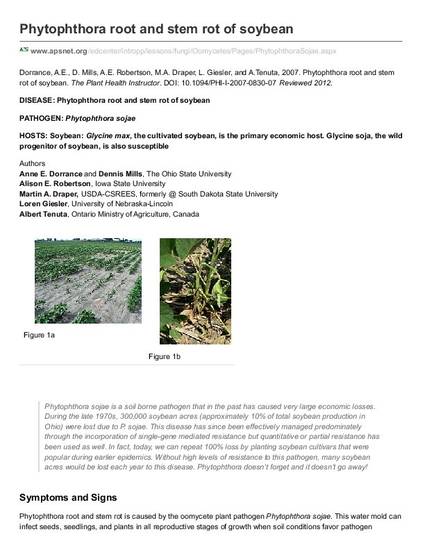
Article
Phytophthora root and stem rot of soybean
The Plant Health Instructor
Document Type
Article
Disciplines
Publication Version
Published Version
Publication Date
1-1-2007
DOI
10.1094/PHI-I-2007-0830-07
Abstract
Phytophthora sojae is a soil borne pathogen that in the past has caused very large economic losses. During the late 1970s, 300,000 soybean acres (approximately 10% of total soybean production in Ohio) were lost due to P. sojae. This disease has since been effectively managed predominately through the incorporation of single-gene mediated resistance but quantitative or partial resistance has been used as well. In fact, today, we can repeat 100% loss by planting soybean cultivars that were popular during earlier epidemics. Without high levels of resistance to this pathogen, many soybean acres would be lost each year to this disease. Phytophthora doesn’t forget and it doesn’t go away!
Rights
Works produced by employees of the U.S. Government as part of their official duties are not copyrighted within the U.S. The content of this document is not copyrighted.
Language
en
File Format
application/pdf
Citation Information
Anne E. Dorrance, Dennis Mills, Alison E. Robertson, Martin A. Draper, et al.. "Phytophthora root and stem rot of soybean" The Plant Health Instructor (2007) p. 1 - 10 Available at: http://works.bepress.com/alison-robertson/136/

This is an article from The Plant Health Instructor (2007): 1, doi:10.1094/PHI-I-2007-0830-07. Posted with permission.